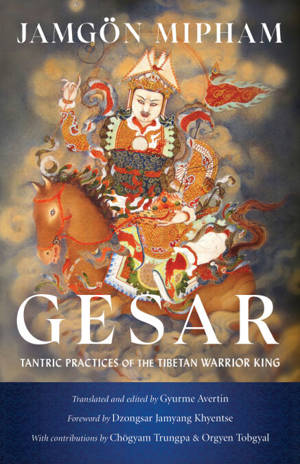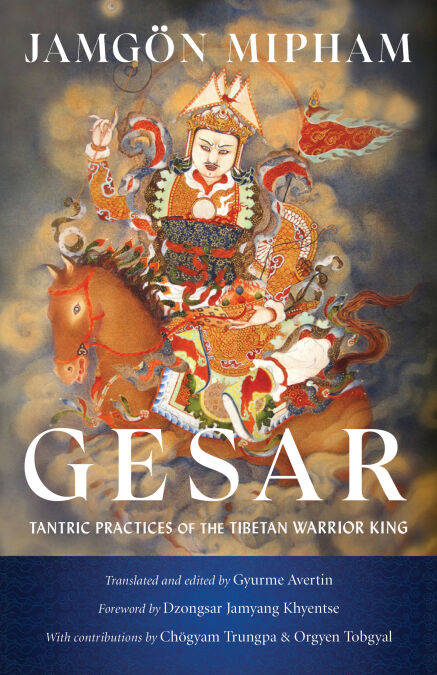
- Afhalen na 1 uur in een winkel met voorraad
- Gratis thuislevering in België vanaf € 30
- Ruim aanbod met 7 miljoen producten
- Afhalen na 1 uur in een winkel met voorraad
- Gratis thuislevering in België vanaf € 30
- Ruim aanbod met 7 miljoen producten
Zoeken
€ 29,52
+ 29 punten
Omschrijving
Gesar of Ling is well known in Tibetan history, literature, and folklore. But, for Buddhist practitioners, he is an enlightened tantric protector and deity—an emanation of Padmasambhava. Engaging in Gesar practice is meant to generate positive circumstances and increase one’s experiences and realization in Buddhist practice.
Gesar of Ling is widely known as the hero of Tibet’s national oral epic, considered the longest epic in the world. But he is also the focus of Buddhist practices in which his enlightened form, known as King Gesar the Jewel, becomes one of the numerous spiritual methods offered by Tibetan Vajrayana Buddhism to progress toward buddhahood. This work contains the complete selection of practice texts compiled by the early modern Tibetan polymath Jamgon Mipham and included in his Collected Works.
Gesar personifies the ideal of the spiritual warrior, who tames negative forces which obstruct the Buddhist path. The practices presented here detail poetic imagery of offerings and their recipients, including Gesar, his court, and the spirits who dwell in his personal belongings. Vajrayana practices such as these are considered mind treasures, meaning rather than being composed, they appeared fully formed as a transmission with the mind of a Vajrayana master.
The practices in this book are meant to be done only by those who have received Gesar Dorje Tsegyal empowerment or “entrustment with his life force,” the reading transmission of the practice, and the associated instructions from a qualified master.
Gesar of Ling is widely known as the hero of Tibet’s national oral epic, considered the longest epic in the world. But he is also the focus of Buddhist practices in which his enlightened form, known as King Gesar the Jewel, becomes one of the numerous spiritual methods offered by Tibetan Vajrayana Buddhism to progress toward buddhahood. This work contains the complete selection of practice texts compiled by the early modern Tibetan polymath Jamgon Mipham and included in his Collected Works.
Gesar personifies the ideal of the spiritual warrior, who tames negative forces which obstruct the Buddhist path. The practices presented here detail poetic imagery of offerings and their recipients, including Gesar, his court, and the spirits who dwell in his personal belongings. Vajrayana practices such as these are considered mind treasures, meaning rather than being composed, they appeared fully formed as a transmission with the mind of a Vajrayana master.
The practices in this book are meant to be done only by those who have received Gesar Dorje Tsegyal empowerment or “entrustment with his life force,” the reading transmission of the practice, and the associated instructions from a qualified master.
Specificaties
Betrokkenen
- Auteur(s):
- Vertaler(s):
- Uitgeverij:
Inhoud
- Aantal bladzijden:
- 384
- Taal:
- Engels
Eigenschappen
- Productcode (EAN):
- 9780834845039
- Verschijningsdatum:
- 28/08/2023
- Uitvoering:
- E-book
- Beveiligd met:
- Adobe DRM
- Formaat:
- ePub

Alleen bij Standaard Boekhandel
+ 29 punten op je klantenkaart van Standaard Boekhandel
Beoordelingen
We publiceren alleen reviews die voldoen aan de voorwaarden voor reviews. Bekijk onze voorwaarden voor reviews.











